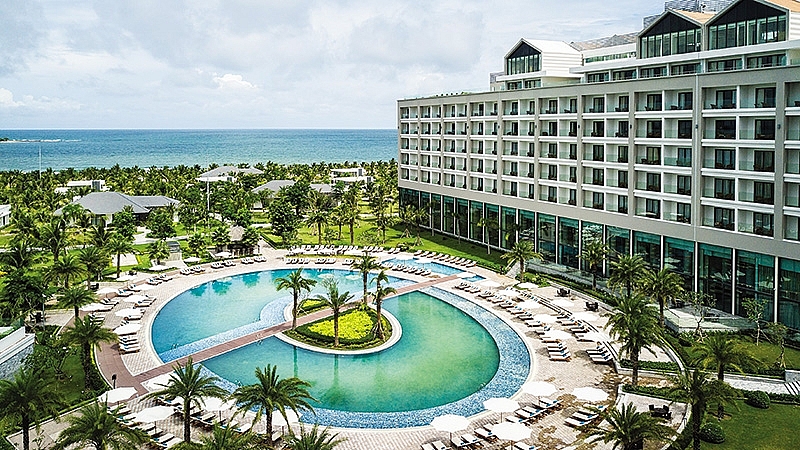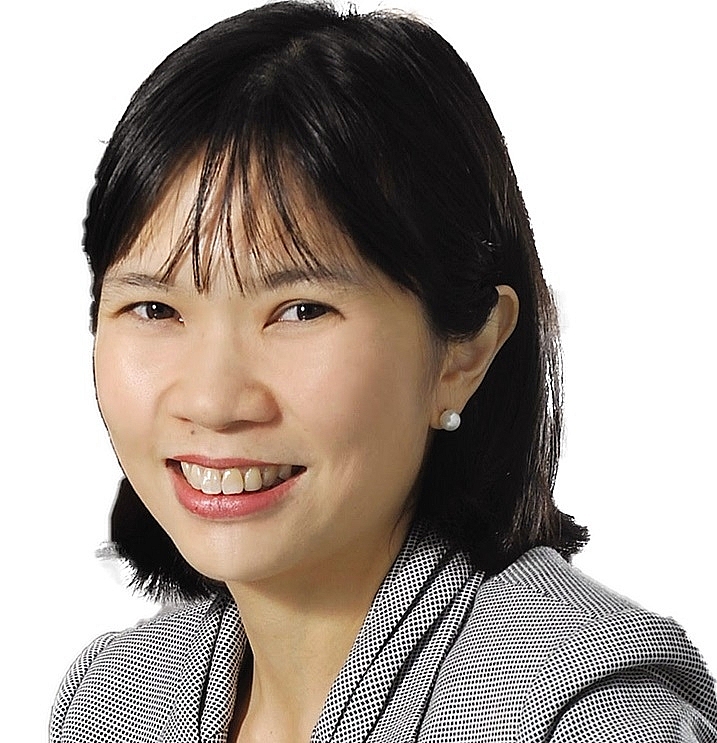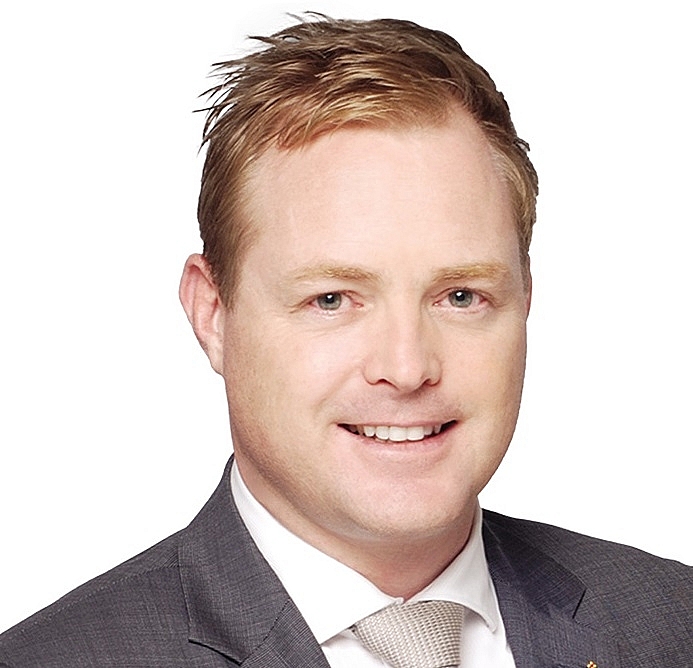Global hotel giants flock to Vietnamese tourism
 |
| With the number of tourists rising, international hotel operators are working up an appetite for the Vietnamese market |
The country has witnessed a large amount of growth in the numbers of international hotel brands and foreign management companies over the past few years.
According to the latest figures by Savills Vietnam, the number of international hotel operators has increased from 30 in 2010 to just short of 80 at the end of 2017. In the first half of 2018, some additional famous brand names came to Vietnam. Among them are Mandarin Oriental in Ho Chi Minh City and Best Western Premier in the central province of Quang Binh.
Radisson Hotel Group recently opened Radisson Blu Resort on Phu Quoc – its first hotel in Vietnam. Travelodge Asia also announced plans for its first property in the central coastal city of Nha Trang, which is scheduled to open in 2020.
Meanwhile, Spain’s Melia Hotel International has strengthened its footprint in Vietnam with the recent signing of three new properties in Ho Chi Minh City, namely Melia Saigon Central, INNSIDE Saigon Central, and INNSIDE Saigon Mariamman, bringing the group’s number of current and future properties in Vietnam to 10.
There have also been new brands introduced into the market in the last three years, including Ozo and X2 Vibe (in New Hoi An City), Double Tree by Hilton (in Halong, Vung Tau, and Hanoi), Four Seasons (in Quang Nam and Hanoi), Oakwood (in Ho Chi Minh City), Glow (in Danang), and Mai House (in Ho Chi Minh City).
Mauro Gasparotti, director of Savills Hotels Asia Pacific, said that he observed a large increase of interest in the country from operators over the past three years, following the expansion of the hospitality market.
“Vietnamese developers are still new to hospitality products, but with the large amount of supply coming, they will learn quickly, and more high-quality assets are expected to be under way. We have forecast that a total of more than 30,000 new rooms will be opened by the end of 2019,” said Gasparotti.
The number of international operators is expected to grow in the coming years, along with the number of local management companies.
“We are very positive about the growth of the sector and the attraction of international operators to Vietnam. It is very interesting to see that operators themselves are launching new brands to target new types of clients such as millennials or health-conscious travellers. Vietnam would be a high-potential market for them to introduce focused brands, as the categories of travellers here are largely diversified,” said Gasparotti.
A recent report by CBRE revealed that foreign investor demand has mostly been led by Asian-based groups. These hold several hotels in large cities and resort destinations.
The comparatively higher yields available in Vietnam continue to lure Asian-based property developers and real estate companies. Mid-market business and hotels in Ho Chi Minh City and Hanoi are the main focus, due to the lack of supply in the gap between high-end and local operators.
Recently, InterContinental Hotel Group (IHG) acquired a 51-per-cent stake in Regent Hotels and Resorts for an amount of $39 million. Regent has an operation contract for BIM Group’s Regent Residences Phu Quoc, which will become operational in 2019. With the transaction, IHG expanded its portfolio to 10 hotels and resorts in Hanoi, Danang, and Ho Chi Minh City.
Indochina Capital lately joined with Japan’s Kajima to build up a chain of hotels in Hanoi, Ho Chi Minh City, and Danang under the brand name Wink Hotels. The two first land plots were revealed to be in Ho Chi Minh City and Danang – two business and tourism hubs of Vietnam. The 226-room hotel in Ho Chi Minh City will come online in 2019, whereas the 243-room hotel in Danang will be put into operation in 2020.
The hotel segment has been very active in the last three years and has caught the attention of many foreign investors, mainly from Japan, South Korea, Hong Kong, and Singapore.
South Korean investors mostly seek large-scale, high-end hotels with up to 250 rooms in Hanoi, Danang, and Ho Chi Minh City, where many South Koreans live, while Japanese investors are interested in smaller-scale hotels with fewer than 150 rooms in Hanoi and Ho Chi Minh City. Singaporean investors, meanwhile, hunt for multi-purpose complexes featuring a hotel segment.
Hanoi and Ho Chi Minh City currently have limited land funds for hotel development, since the prices are high, while Danang and Phu Quoc are offering more opportunities for investors, with much land left to develop.
It can be expected that the number of hotel transactions will remain high until at least 2019, due to the limited supply and high demand.
Vietnam was at the third position of the fastest-growing tourist destinations in 2017 in a report published by the United Nations
World Tourism Organization (UNWTO). Vietnam received more than 13 million international visitors in 2017, an increase of 6.8 per cent compared to 2016. International arrivals to Vietnam in the first eight months of 2018 reached more than 10.4 million, increasing by 22.8 per cent compared to the same period of last year.
| Karl Hudson, Area vice president – Thailand, Vietnam, Cambodia, and Myanmar, Marriott International
Marriott now has 30 leading brands globally. We see great potential in Vietnam. As the sixth-fastest-growing tourism destination in the world, tourism accounted for 9.4 per cent of GDP and 7.6 per cent of total employment in 2017, according to the World Travel and Tourism Council. Vietnam is poised to continue on this growth trajectory, with continued government spending of over $1.3 billion on tourism infrastructure such as e-visas, visa waivers, and the construction of a new passenger terminal in the southern area of Tan Son Nhat International Airport in Ho Chi Minh City, which will accommodate 20 million passengers per year. We have 13 hotels in the development pipeline for this market. We currently operate nine hotels in Vietnam with over 3,000 rooms across five brands (JW Marriott, Sheraton, Le Meridien, Renaissance, and Four Points). We first opened JW Marriott Hanoi in 2013. The second luxury hotel is JW Marriott Phu Quoc Emerald Bay Resort and Spa, which opened last year. Serena Lim, Vice president of development, Southeast Asia and Korea, InterContinental Hotels Group (IHG)
IHG has been in Vietnam for over a decade, with our first property, InterContinental Hanoi West Lake, opening in 2007. Today, we have eight hotels operating (six InterContinental hotels and two Crowne Plaza hotels) in Vietnam with a further 10 in our development pipeline. Over the next three to five years we are excited to be introducing the Regent, Holiday Inn, and Hotel Indigo brands to Vietnam. Given the growing middle class, there is great opportunity for growth in the mid-scale and up-scale segment. We continue to see opportunities in upper up-scale to luxury spaces, including lifestyle hotels, as markets mature and become more sophisticated. We continue to see steady improvements in infrastructure, presenting opportunities to create new destinations for foreign and domestic travellers, and we have the brands to cater to these destinations and consumers. Vietnam is one of the fastest-growing economies continuing to be an increasingly popular destination for foreign travellers. Andre de Jong, Vice president, Operations, South East Asia and Pacific, Radisson Hotel Group
Our group expanded footprint into Vietnam with the opening of Radisson Blu Resort Phu Quoc boasting 522 rooms and suites. Our growth strategy for the market remains steadfast, bringing us close to a 1,000-room inventory with Radisson Blu Resort Cam Ranh (295 keys) and Radisson Phu Quoc (218 keys), set to open in 2019. Vietnam is a strong emerging market that the group has strong vested interest in. The pipeline growth in the market has also been strong and robust. Radisson Hotel Group is committed to continuing its growth strategy across its various brands in the region. At Radisson Hotel Group, we see the growth opportunities in Vietnam to be immense and we are proud to be a part of the country’s economic growth story. The Vietnamese government has made travel and tourism a national growth and development priority, resulting in significant capital being invested into infrastructure, connectivity, and growth acceleration. In addition to the key gateway cities of Ho Chi Minh City and Hanoi, resort destinations on the eastern and western shores are also regions with high growth potential. |
What the stars mean:
★ Poor ★ ★ Promising ★★★ Good ★★★★ Very good ★★★★★ Exceptional
Related Contents
Latest News
More News
- Ho Chi Minh City hits $8.37 billion in FDI (December 29, 2025 | 08:28)
- Tax sector wraps up 2025 and sets priorities for next year (December 25, 2025 | 14:00)
- Heavy industries set for pilot greenhouse gas quotas (December 25, 2025 | 10:00)
- $250 million deal targets women-owned SMEs, sustainable agriculture (December 22, 2025 | 17:40)
- UOB sees Vietnam growth easing in fourth quarter (December 22, 2025 | 17:39)
- Government moves to establish International Financial Centre (December 21, 2025 | 21:00)
- Vietnam's IFC to target global investment flows (December 21, 2025 | 18:00)
- Ha Tinh breaks ground on major Vingroup industrial and energy projects (December 19, 2025 | 18:24)
- EVN launches major power infrastructure projects nationwide (December 19, 2025 | 18:17)
- VAL inaugurates second production line to meet domestic animal feed demand (December 19, 2025 | 16:37)




 Tag:
Tag:





















 Mobile Version
Mobile Version